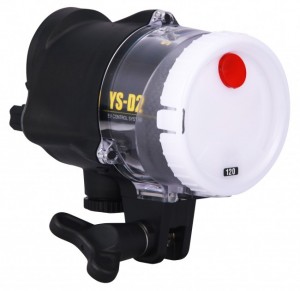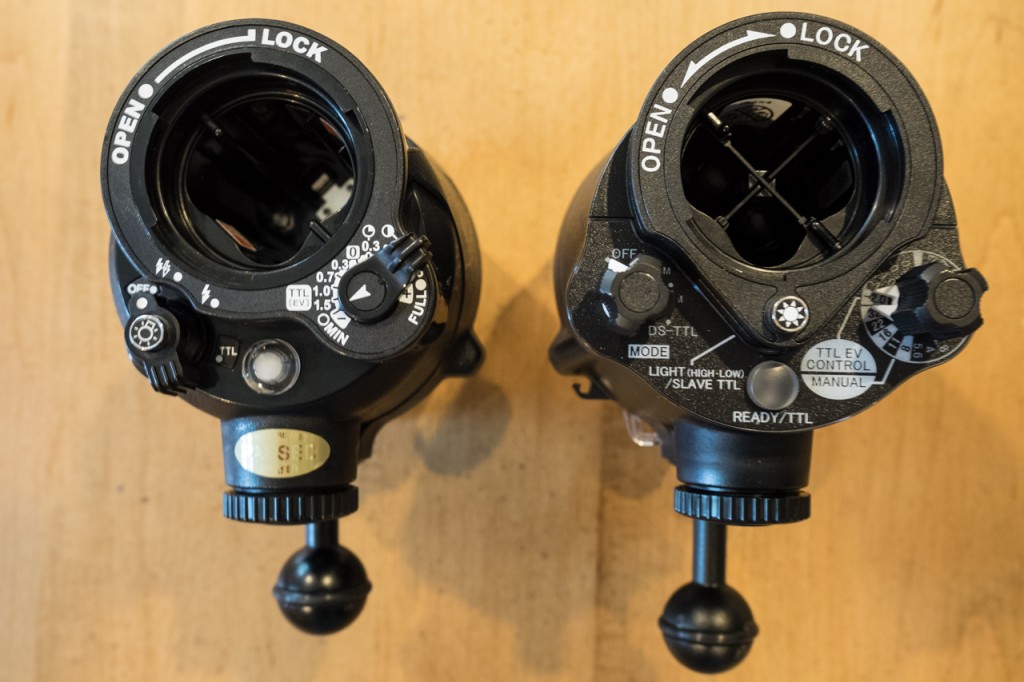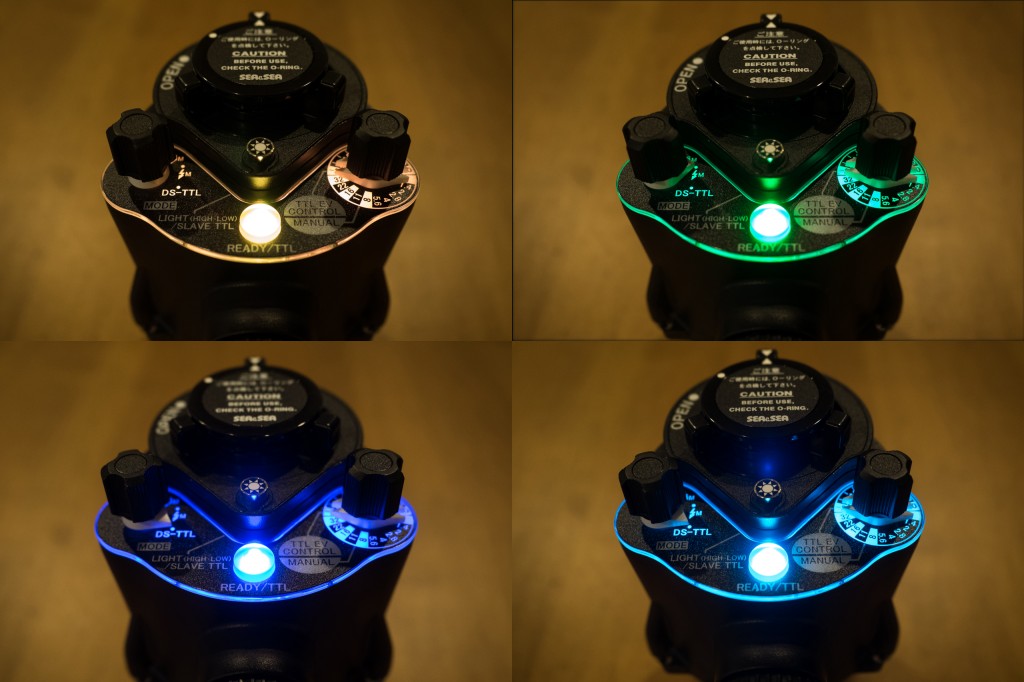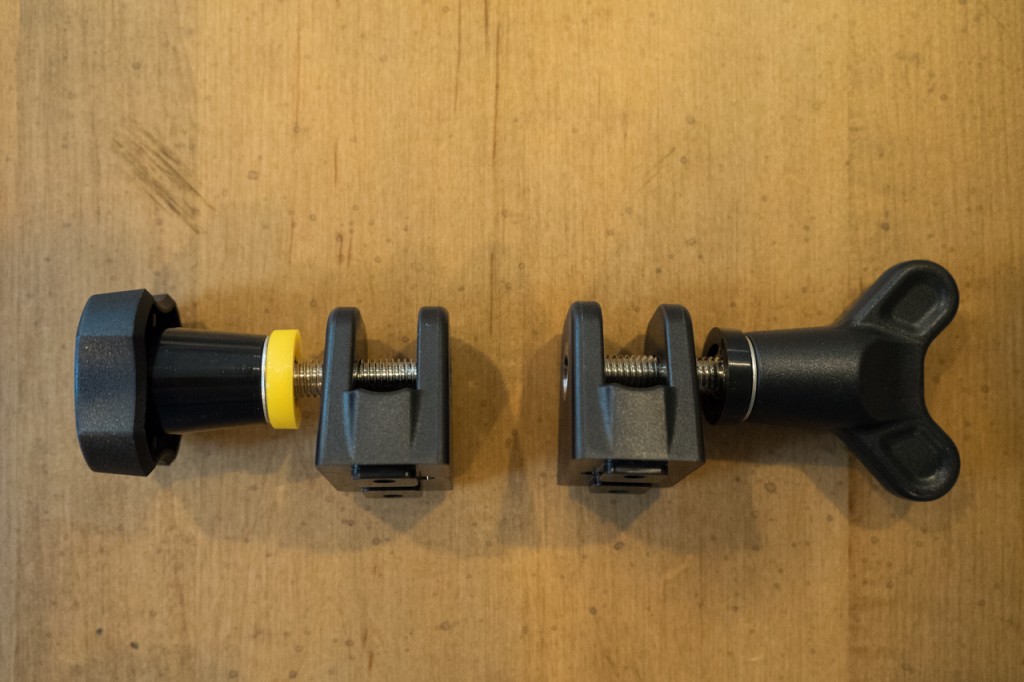Sea & Sea YS-D2 Underwater Strobe Review

Those of us who have used the Sea & Sea YS-D1 strobe in the past have enjoyed its ease of use, its durability, and its outstanding light quality. About the only thing we didn’t enjoy was how easy it was to inadvertently bump one of the knobs on the back of the strobe while repositioning it (especially while wearing gloves), often resulting in either changing the shooting mode or turning the strobe off. It often required either moving the strobe itself, or even the entire kit, to see what the problem was when one (or both) of the strobes suddenly stopped firing after being repositioned, resulting in missed shots and frustration (of course, that would also probably be the exact moment a 15-foot hammerhead decides to glide by). Fortunately, Sea & Sea has not only addressed this issue with its newly-released YS-D2 strobe, but has added a host of new functions likely to please even the most discriminating underwater photographer.
New Features of the YS-D2
– The control knobs of the YS-D1 have been replaced by rotary magnetic dials on the YS-D2. The new dials do not protrude past the frame of the strobe body, thereby nearly eliminating accidentally changing the mode or light level. Over a period of 14 dives, I used a configuration of one YS-D1 strobe plus one YS-D2 strobe. There were no instances of the mode or light level dials on the YS-D2 being inadvertently changed while repositioning the strobe; however, on every dive there was at least one instance of the mode or light level being accidentally moved on the YS-D1 during repositioning.
– The battery housing now contains dividers, making battery insertion much easier. While this may seem trivial, any of us who have tried to change out the batteries on a small boat while getting bounced around in rough seas will appreciate the improvement.

– The control panel is now backlit with a different color for each Exposure Control mode – orange for Pre-Flash, green for Without Pre-Flash, aqua for DS-TTL, and dark blue for Slave-TTL. Now in the unlikely instance of the control dials being moved during strobe respositioning, a simple glance will confirm the mode without having to move the strobe or the entire kit.

– The modeling light on the YS-D2 has two power levels (as opposed to one on the YS-D1), and also comes with a red insert so that it can be used as a red focus light when photographing animals that might be skittish around white light.
– The recycling time has been improved from 1.9 seconds on the YS-D1 to 1.5 seconds on the YS-D2, which is certainly helpful to those of us who enjoy shooting fast-moving animals. There is also now an audible beep when the strobe is ready to fire again. Initially I was concerned that this would frighten away the animals I was shooting, but the volume isn’t very loud at all and the animals I was photographing didn’t seem to take much notice.
– The fixing bolt has been improved for the YS-D2, resulting in a more ergonomic design which makes it easier to adjust the bolt, especially while wearing gloves.

Similarities of the YS-D2 to the YS-D1
– The YS-D1 and YS-D2 are very similar in size and weight, with the YS-D2 being just slightly larger (to accommodate the placement of the control dials) and heavier (623g for the YS-D2 vs. 610g for the YS-D1, weighed with YS mount and bolt, but without batteries). This minimal difference isn’t noticeable when using the YS-D2.

– The outstanding strobe power and light quality of the YS-D1 has not been changed in the YS-D2. Below are several images taken while using the YS-D1 mounted on the left side of the housing, and the YS-D2 mounted on the right side. As we would expect, the light color and quality is indistinguishable between the YS-D2 and YS-D1.
Specifications and YS-D2/YS-D1 Comparison
| YS-D2 | YS-D1 | |
|---|---|---|
| Maximum Guide Number (ISO 100, land) | 32 | 32 |
| Minimum Guide Number in DS-TTL mode (ISO 100, land) | 1 | 3.7 |
| Beam Angle | 80°x80° (no Diffuser) / 100°x100° (Diffuser 100) / 120°x120° (Diffuser 120) | 80°x80° (no Diffuser) / 100°x100° (Diffuser 100) / 120°x120° (Diffuser 120) |
| Batteries | AA batteries x 4, 1.5V Alkaline or 1.2V Nickel Metal Hydride (NiMH) | AA batteries x 4, 1.5V Alkaline or 1.2V Nickel Metal Hydride (NiMH) |
| Recycle Time (full, using NiMH batteries) | 1.5 sec | 1.9 sec |
| Color Temperature | 5600K | 5600K |
| Depth Rating | 100m | 100m |
| Exposure Control | DS-TTL / Slave TTL / Manual (11 steps) | DS-TTL / Slave TTL / Manual (11 steps) |
| EV Exposure Compensation Function | ±2.0EV | ±1.5EV |
| Controls | – Power Switch (rotary magnet) – Light Level Control Dial (rotary magnet) – Target Light Switch |
– Power Light Switch (knob) – Light Level Control Dial (knob) – Target Light Switch |
| Control Panel Illumination | Backlit Illuminated Panel (aqua/blue/green/orange) | None |
| LED Target Light | 2-Step Power Settings (100/300 lumen) | Yes, LED |
| Audible Charge Signal | Yes | No |
| Light Emission Detection Function (improves accuracy of low-powered light emissions) | Yes | No |
| Auto Power-Off Function | 30 minutes | 30 minutes |
| Sync Cord | 5-Pin Sync Cord-N / Fiber-Optic Cable | 5-Pin Sync Cord-N / Fiber-Optic Cable |
| Over-Pressure Relief Valve | Yes | Yes |
| Dimensions (W x H x D) | 89x133x116mm / 3.5×5.2×1.4in (including YS base, excluding protruding parts) | 87x135x111mm / 3.5×5.4×4.4in (including YS base, excluding protruding parts) |
| Weight | 623g / 22oz (with YS mount and bolt, without batteries) | 610g / 21.5oz (with YS mount and bolt, excluding batteries) |
| Accessories (included) | Diffuser 100, Diffuser 120, Silicone Grease, Strobe Ball-Base (improved), Fixing Bolt (improved), Hex Wrench, Red Filter (x2) | Diffuser 100, Diffuser 120, Silicone Grease, Strobe Ball-Base, Fixing Bolt, Hex Wrench |
Conclusions
Sea&Sea obviously put significant thought into its next generation of the YS-D series strobe, and it shows. Ascribing to the “If-it-isn’t-broke-don’t-fix-it” line of thinking, they let the general size, shape, and light quality of the strobe remain unchanged, while addressing issues such as the protruding knobs, and the difficulty in easily detecting the current exposure control settings which plagued the YS-D1. The functionality of the YS-D2 has also been improved with its 2-step power settings for the LED target light, the ability to use the target light as a red focus light, and the faster recycle time.
For those of you who use the YS-D1 but have minimal problems with accidental exposure mode changes while repositioning the strobe, there probably would not be a significant incentive to upgrade at this time. However, if you’re like me and find yourself lamenting about all of those missed shots, but still enjoy the quality and ease-of-use of the YS-D1, then upgrading to the YS-D2 (especially now with its host of new features), would certainly be a sound investment.
The YS-D2 is available as strobe head only or as part of a YS-D2 tray & arm package.
For more comparisons with other UW strobes and further info about strobes in general, read our Ultimate Underwater Strobe Guide!
Useful Links:
YS-D2 Custom Mode Chart (Which setting for which camera model)
- Sea & Sea YS-D2 Underwater Strobe Review – September 26, 2015

 USD
USD



